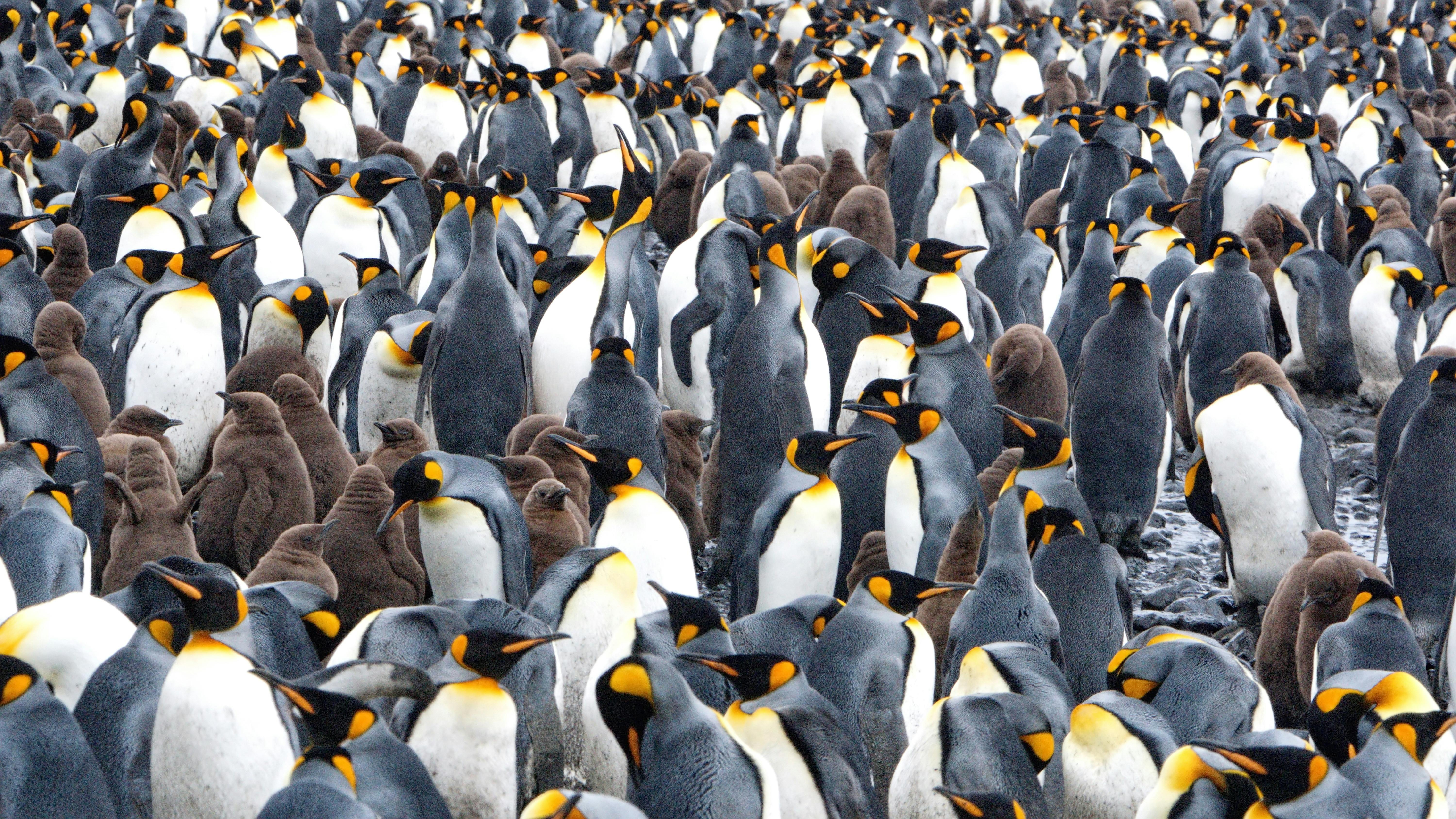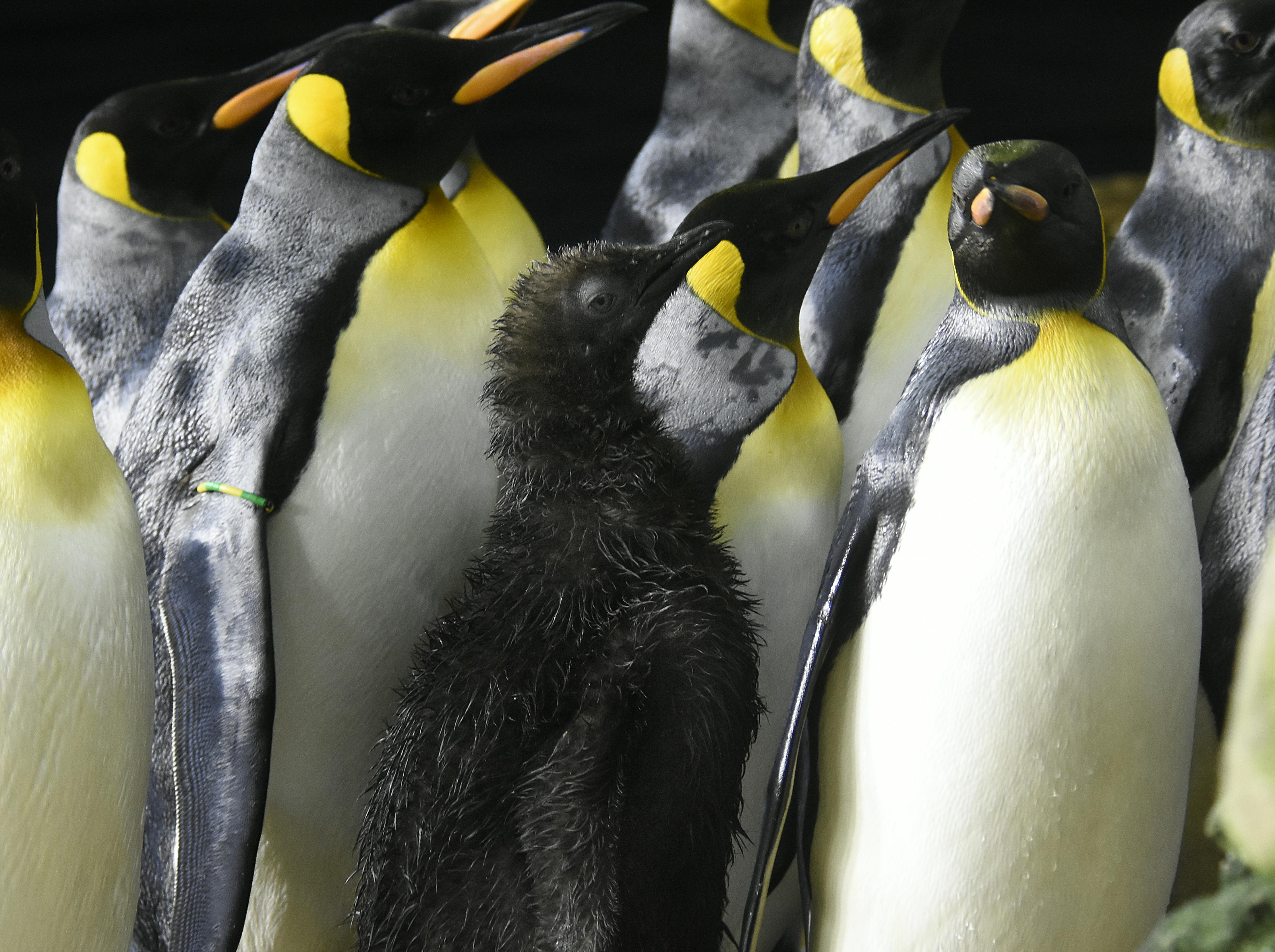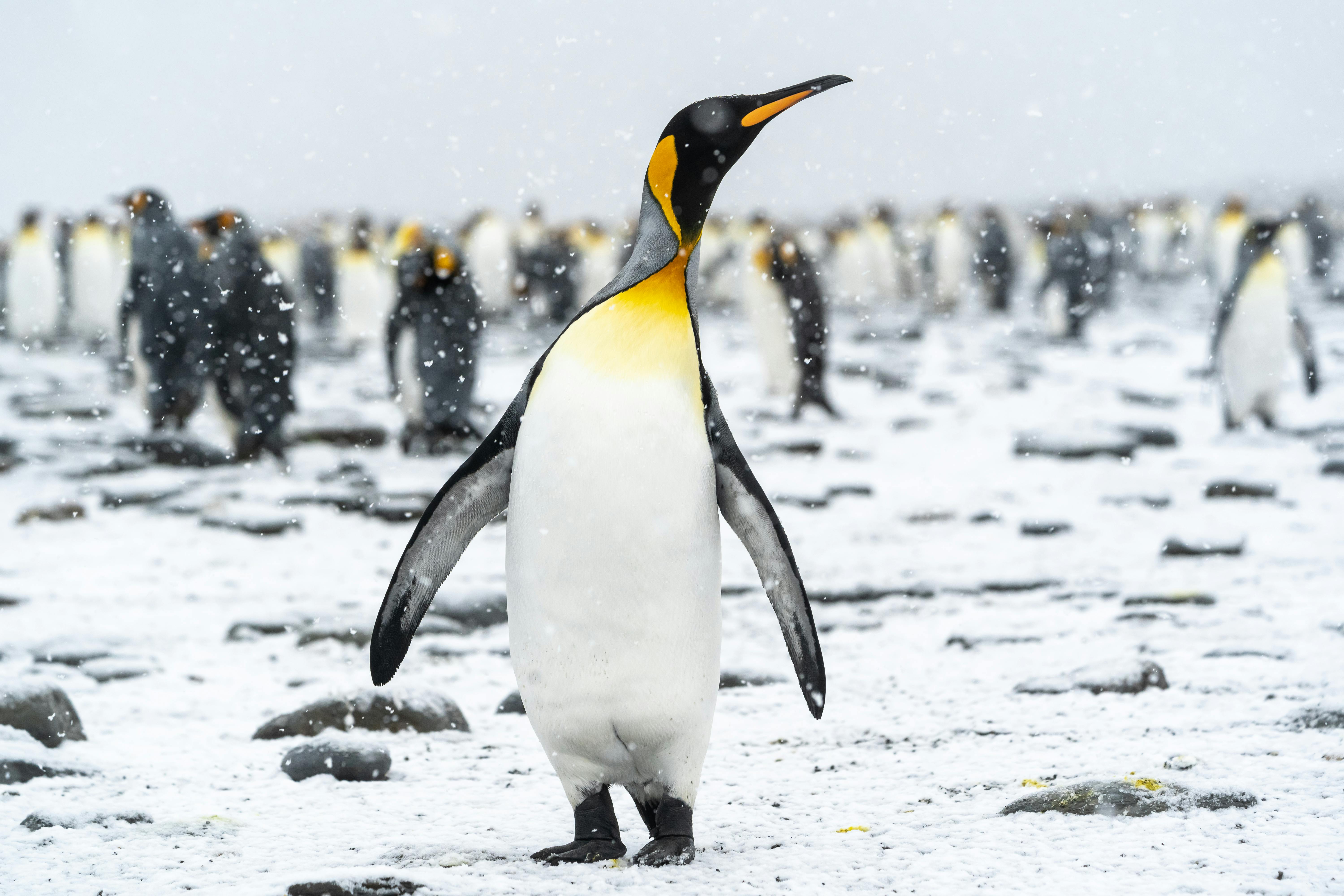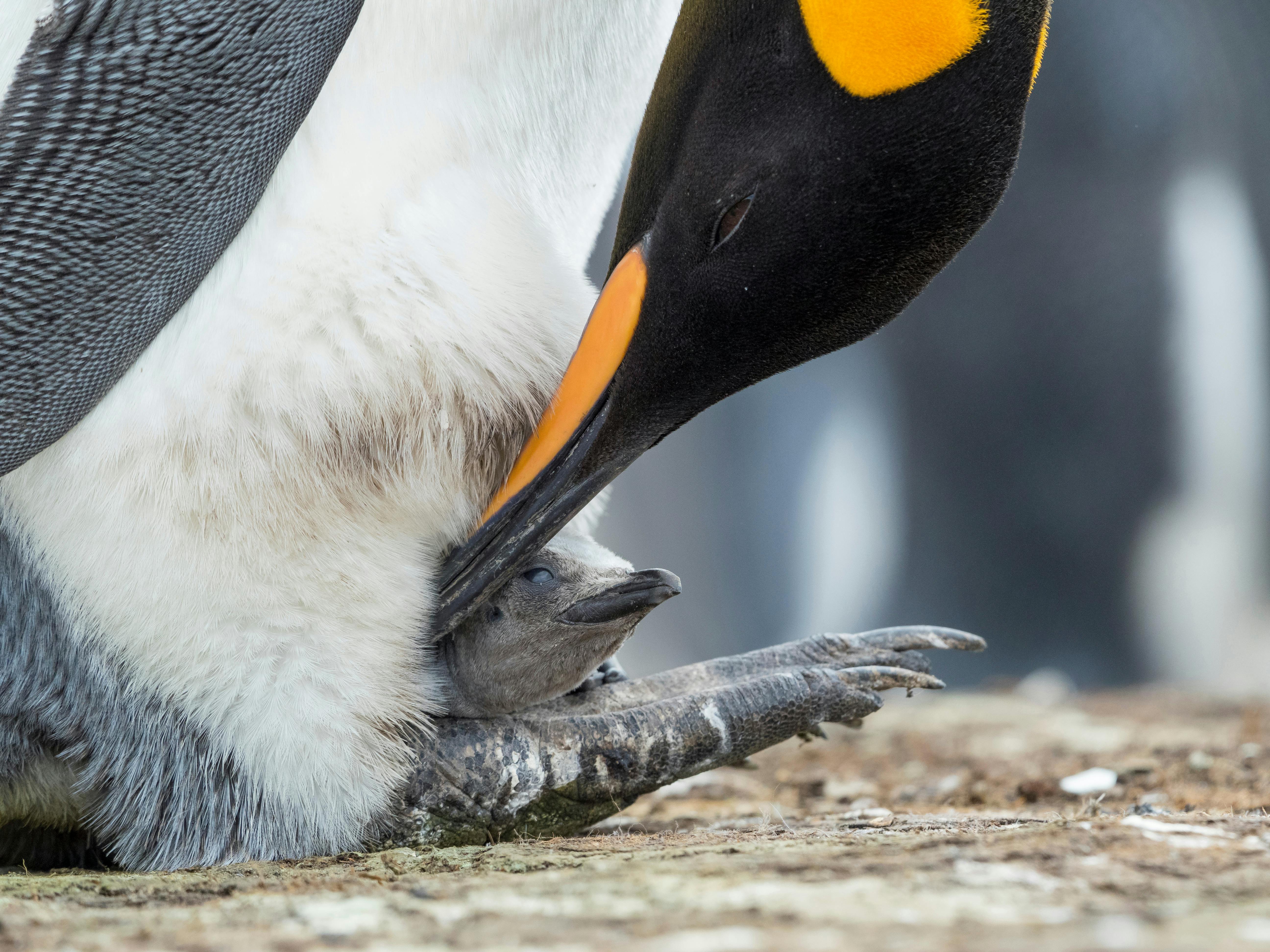
On the cold islands around Antarctica, where the icy wind blows across, there’s a colony of up to tens of thousands of king penguins. In the ocean, penguins shoot through the crystal-clear water like torpedoes with their streamlined bodies, searching for their next meal. They play an important role in their ecosystem by maintaining fish populations. Let’s dive into the world of king penguins!
Aptenodytes patagonicus

± 26 years
± 95 centimetres
9 - 15 kilograms
King penguins can be recognised by their black plumage with a grey-blue upper back, a white belly, orange cheek spots, and golden-yellow feathers on the top of the chest. They look a lot like emperor penguins but are slightly smaller and brighter in colour. The young of king penguins look very different from the adults: namely dark brown and woolly. Explorers even believed that the young were a completely different species and called them woolly penguins.
King penguins naturally occur at the southern cape of South America and on islands north of Antarctica. In Antarctica itself, they are basically absent. They live in coastal areas where they can easily enter the water to fish. They breed mainly on snow-free beaches.

Penguins have several ways of staying warm. For example, the black colour of their feathers absorbs extra heat from sunlight. A layer of air also remains between those downy feathers, which insulates the penguins well. This plumage is virtually impervious to water and wind. They can also balance on the back of their feet and the tip of their tail, allowing as little of their body as possible to touch the cold ground. But if it is really too cold, penguins can also stand close together to share their warmth.

King penguins do not build nests but instead incubate their eggs on their feet. The parents take turns keeping the egg and the eventually hatched young warm. The other parent goes out to sea to hunt and regain strength. Once the young hatches, the parent that is out hunting also provides food for it. When the young is old enough to be left alone, both parents depart, but they return occasionally to feed their young.

Although the king penguin is not an endangered species, there are factors that could pose a threat in the future. Overfishing and rising sea temperatures may reduce the amount of prey available to king penguins. As a result, they have to swim further and further to find food. While hunting, they then use more and more energy, which they have to replenish by eating more. This causes king penguins to enter a vicious circle. At the moment, the king penguin population is fortunately still on the rise, but we must remain vigilant that the number of penguins in the wild does not suddenly take a dive.
At Rotterdam Zoo, king penguins live alongside gentoo penguins. The space they inhabit is maintained at 10 degrees Celsius, and the air is continuously purified. The penguins are fed herring twice a day, alternating with sprat or sand eel. In the morning, the penguins are hand-fed, with extra vitamins added to the fish. In the afternoon, the fish are thrown into the water to give the penguins extra exercise and challenge.

For €2.50 you can contribute to a healthy meal for the king penguin.

For €5 you contribute to a better environment for the king penguin.

For €10 you contribute to education about the king penguin.



